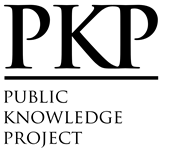Effect of antibiotics on gut microbiome diversity in Clarias gariepinus from commercial hatcheries
Abstract
The study investigated the effects of antibiotics on gut microbiome diversity in fish (Clarias gariepinus). Total aerobic count (TAC), total coliform count (TCC) and total fungal count (TFC) of gut contents were determined. Results revealed that there were significant differences (p<0.05) observed in the total aerobic and total coliform counts across the hatcheries. Using the Shannon and Simpson indices to measure variability in bacterial diversity among the hatcheries, TAC in hatcheries using antibiotics had greater diversity compared to hatcheries not using antibiotics while TCC where hatcheries not using antibiotics had higher diversity than the ones using antibiotics. This indicates that hatcheries where antibiotics were not used had higher microbial densities than hatcheries where antibiotics were used. However, it was observed that fungi were completely absent as indicated in the total fungal counts. In hatcheries using antibiotics, Shigella spp, Klebsiella spp and Salmonella spp were isolated while in hatcheries not using antibiotics, Shigella spp, Klebsiella spp and Enterobacter spp were isolated. Sorenson’s coefficient indicated a slight overlap or similarity with a value of 0.667 among the bacterial communities in samples from farms using antibiotics and ones not using antibiotics. All the bacteria isolated belong to the phylum Proteobacteria. The study revealed that antibiotics had a slight effect on the diversity of the fish gut microbiome indicating that antibiotics are moderately used in fish hatcheries in Ijebu-Ode Region of Ogun State.
Keywords: Antibiotics; Diversity; Gut Microbiome
Full Text:
PDFReferences
Cabello, F.C., Godfrey, H.P., Tomova, A., Ivanova, L., Millanao, A., and Buschmann, A.H. 2013. Antimicrobialuse in aquaculture re-examined: Its relevance to antimicrobial resistance and to animal and human health. Environmental Microbiology 15: 1917-1942.
Clements, K.D., Angert, E.R., Montgomery, W.L., and Choat, J.H. 2014. Intestinal microbiota in fishes: what’s known and what’s not. Molecular Ecology 23:1891-1898.
Durojaiye, A.F., and Sule, S.O. 2018. A preliminary assessment of aquamedicines used at eriwe fish farm community, Ogun State, Nigeria. 33rd Annual Conference of Fisheries Society of Nigeria (FISON) at Lagos State Polytechnic, Ikorodu, Lagos, 28th October-2nd November, 2018.
Durojaiye, A.F., Sule, S.O., and Ojetayo, T.A. 2019. Health management practices adopted in fish production at Eriwe Fish Farming Community, Ogun State, Nigeria. Nigerian Journal of scientific Research 18(4&5): 503-511.
Durojaiye, A.F., Ojetayo, T.A., Sule, S.O., Balogun, T.E., and Akintuyole, A.S. 2020. Incidence of Diseases in Fish Hatcheries and Control Measures Adopted by Fish Farmers in Ijebu-Ode Region, Ogun State, Nigeria. FUW Trends in Science and Technology 5(1), 083-086.
Durojaiye, A.F., Olajuigbe, O.O., Oramadike, C.E., and Ogunsanya, A.K. 2023. Assessment of antibiotic sensitivity of microbial isolates from fish hatcheries. Acta Aquatica Aquatic Sciences Journal 10 (3):204-208 https://10.29103/aa.v10i3.10154
Estruch, G., Collado, M., Penaranda, D., Vidal, A.T., Cerda, M.J., and Martinez, G.P. 2015. Impact of fishmeal replacement in diets for gilthead sea bream (Sparus aurata) on the gastrointestinal microbiota determined by pyrosequencing the 16SrRNA gene. PLoS One 10:e0136389.
FAO. 2016. The state of world fisheries and aquaculture 2016. Contributing to food security and nutrition for all. Rome. 200 pp.
Feng, Q., Chen, W.D., and Wang, Y.D. 2018. Gut microbiota: An integral moderator in health and disease. Frontiers in Microbiology. 9: 151.
Ghanbari, M., Kneifel, W., and Domig, K.J. 2015. A new view of the fishgut microbiome: Advances from next-generation sequencing. Aquaculture 448:464-475.
Giatsis, C. 2016. Microbial interactions in the fish gut. A Thesis submitted to Wageningen University. https://doi.org/10.18174/387232
Han, Q.F., Zhao, S., Zhang, X.R., Wang, X.L., Song, C., and Wang, S.G. 2020. Distribution, combined pollution and risk management of antibiotics in typical marine aquaculture farms surrounding the Yellow Sea, North China. Environ mint 138:105551 www.sciencedirect.com
Li, W., Shi, Y., Gao, L., Liu, J., and Cai, Y. 2012. Occurrence of antibiotics in water, sediments, aquatic plants, and animals from Baiyangdian Lake in north China. Chemosphere 89,1307–1315.
Lozupone, C.A., Stombaugh, J.I., Gordon, J.K., and Knight, R. 2012. Diversity, stability and resilience of the human gut microbiota. Nature 489: 220-230.
Pham, D.K., Chu, J., Do, N.T., Brose, F., Degand, G., Delahaut, P., De, P.E., Douny, C., Van, N.K., Vu, T.D., and Scippo, M.L. 2015. Monitoring antibiotic use and residue infreshwater aquaculture for domestic use in Vietnam. EcoHealth 12:480-489.
Roeselers, G., Mittge, E., Stephens, W., Parichy, D., Cavanaugh, C., Guillemin, K., and Rawls, J.F. 2011. Evidence for a core gut microbiota in the zebrafish. The ISME Journal 5, 15951608.
Rombout, J.H., Abelli, L., Pichietti, S., Scapigliati, G., and Kiron, V. 2011. Teleost intestinal immunology. Fish Shellfish Immunology 31: 616-626.
Shahdat, H.., Raji, S., Syed, A.H., Shaheed, R., and Anwar, H.M. 2014. Effects of antibiotic on the bacterial microflora in two commercially important catfish species, Clarias batrachus and Heteropneustes fossilis in Bangladesh. Journal of Coastal Life Medicine. 2(11), 845-848.
Sudheesh, P.S., Al-Ghabshi, A., Al-Mazrooei, N., and Al-Habsi, S. 2012. Comparative pathogenomics of bacteria causing infectious diseases in fish. International Journal of Evolutionay Biology. doi:10.1155/2012/457264.
Zhou, Y., Zhang, Y., and Zhou, J. 2021. Effects of dietary fish oil and vegetable oil on growth performance, fatty acid composition and immune response of juvenile silver carp (Hypophthalmic molitrix) Aquaculture 534: 736054.
DOI: https://doi.org/10.29103/aa.v1i1.10232
 Article Metrics
Article Metrics
 Abstract Views : 24 times
Abstract Views : 24 times
Refbacks
- There are currently no refbacks.
Copyright (c) Acta Aquatica: Aquatic Sciences Journal

This work is licensed under a Creative Commons Attribution 4.0 International License.









